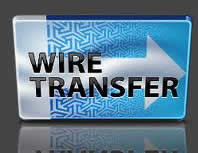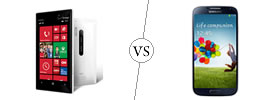Difference between NEFT, RTGS, ACH, Wire, EFT and IMPS
Key Difference: 'RTGS' stands for Real Time Gross Settlement. It is an online system through which the funds can be transferred from one institution to the other, within the country in real time. ‘NEFT’ stands for National Electronic Fund Transfer. In ‘NEFT’ settlements, transactions are settled in batches during specific timings within the country. Automated Clearing House (ACH) is an electronic network that is used for financial transactions. An ACH is a transfer that occurs through the Automated Clearing House. It processes large volumes of transactions in batches, therefore time of delivery is not instant. Wire network is basically a network through which funds can be transferred immediately from one bank account to the other account. For bank to bank wire transfer the sender and receiver both must have proven identities. ‘IMPS' stands for Immediate Payment Service. It is an inter-bank electronic and instant money transfer service that can be availed on mobile phones.
NEFT, RTGS, ACH, Wire, EFT and IMPS, all these terms are often heard in banking sector. These payment methods are related to each other in many ways and are different also in many other ways. NEFT and RTGS are two important payment methods used by banks in India. Thus the article defines these both in context to India. However RTGS systems are available in many countries. ACH is the network of America, but similar clearing houses are used in other countries for processing the transactions. IMPS again refers to an Indian banking method that is based on mobile phones. Let us understand these terms in details to bring out the differences between them.
.jpg) NEFT’ stands for National Electronic Fund Transfer. NEFT enables the individuals or institutions to electronically transfer the funds from any bank branch to any individual or institutions that may have an account in any other bank branch in the country participating in the Scheme. This system was launched in November 2005 in India. In India, Reserve Bank of India ordered all banks of India to migrate to NEFT by mid December 2005. A bank branch must be NEFT-enabled to use the NEFT funds transfer network. Individuals or institutions which maintain accounts with a bank branch are eligible for using NEFT. Even such individuals who do not have a bank account can also deposit cash at the NEFT-enabled branches with instructions to transfer funds using NEFT.
NEFT’ stands for National Electronic Fund Transfer. NEFT enables the individuals or institutions to electronically transfer the funds from any bank branch to any individual or institutions that may have an account in any other bank branch in the country participating in the Scheme. This system was launched in November 2005 in India. In India, Reserve Bank of India ordered all banks of India to migrate to NEFT by mid December 2005. A bank branch must be NEFT-enabled to use the NEFT funds transfer network. Individuals or institutions which maintain accounts with a bank branch are eligible for using NEFT. Even such individuals who do not have a bank account can also deposit cash at the NEFT-enabled branches with instructions to transfer funds using NEFT.
'RTGS' stands for Real Time Gross Settlement. As the name indicates, settlement in RTGS is done on a real time. It is an online system through which the funds can be transferred from one institution to the other. Banks are important institutions that use this kind of settlement. This electronic payment system is normally controlled by the central bank of a country. This involves no physical exchange of money but the values in the electronic accounts are changed.
It is the fastest way in which the money can be transferred within the country. All.jpg) transactions sent through RTGS are queued and submitted on the basis of ‘First in first out’. RTGS enabled banks can also prioritize the transactions according to the requirement. Transactions are settled on one to one basis without clubbing with other transaction. Transactions between banks are settled on a continuous gross basis (on a transaction by transaction basis) with the Central Bank. In RTGS the transactions are processed continuously. Therefore the transfers are quick and very useful during emergencies. It is a real time processing system thus, there is no waiting time attached with this system. It also helps in giving a clear picture of the accounts at any instance. The World Bank also offers help to countries who want to implement the system. RTGS systems are generally secure as they are designed by keeping the international standards in mind
transactions sent through RTGS are queued and submitted on the basis of ‘First in first out’. RTGS enabled banks can also prioritize the transactions according to the requirement. Transactions are settled on one to one basis without clubbing with other transaction. Transactions between banks are settled on a continuous gross basis (on a transaction by transaction basis) with the Central Bank. In RTGS the transactions are processed continuously. Therefore the transfers are quick and very useful during emergencies. It is a real time processing system thus, there is no waiting time attached with this system. It also helps in giving a clear picture of the accounts at any instance. The World Bank also offers help to countries who want to implement the system. RTGS systems are generally secure as they are designed by keeping the international standards in mind

ACH of America was created in 1970. In 1974 National ACH Association arose from regional ACH organizations and rules were established to facilitate the nationwide clearing of ACH payments. This network is a batch processing, store and forward system. Many countries have a national automated clearing house. Apart from few differences, the basic processing remains the same. Transactions that are received by any financial institutions are generally stored and then processed later in batches. The payments are not sent individually. These ACH transactions are then accumulated and sorted depending upon the destination for transmission during a predetermined period. It avoids paper checks, and thus ACH transactions are transmitted electronically. Bills can also be scheduled to be paid on time.
The payments covered under ACH are:-
Direct deposit of payroll
Direct deposit of government benefits like social security
Payment of consumer bills as loans etc,
E-commerce related payments
Business to business payments etc,
Automated Clearing House (ACH) system is known be the name of Electronic Clearing Service (ECS) in India. ECS is currently available in around 89 centers in India. Reserve Bank of India operates this service in India. With the introduction of NACH or National Electronic Clearing Service (NECS) by Reserve Bank of India, the reach of the system has been further extended.
 A wire network is basically a network through which funds can be transferred form one bank account to the other. The transfer is electronically and thus cannot be seen in practical. The transfer in wire transfers is completely operated by the bank. The earlier version of this kind of transfer was used by the telegraph companies and was used to transfer money order from one office to the other. In European countries, wire transfer is also known as ‘giro’.
A wire network is basically a network through which funds can be transferred form one bank account to the other. The transfer is electronically and thus cannot be seen in practical. The transfer in wire transfers is completely operated by the bank. The earlier version of this kind of transfer was used by the telegraph companies and was used to transfer money order from one office to the other. In European countries, wire transfer is also known as ‘giro’.
Wire transfers authorize the bank on behalf of customer to wire accounts and transfer in other accounts. It is a quick method and thus has been adopted world- wide. It is administered by the global administer. This administer monitors the transfers through various networks. It is regarded as the most convenient way of making payments like personal account management, credit and balance transfers, paying telephone bills, paying of internet bills etc. It is important to mention that in bank-to-bank wire transfer, each account holder must have a proven identity.
ACH process the transactions in batches and therefore is not instant as in wire transfers. The ACH charges are nil or very low fees as compared to the service charge of wire transfers, therefore if the transaction is not be made instantly then people prefer ACH. However, the choice remains with the individual according to the suitability.
'EFT’ stands for Electronic Fund Transfer. It is an umbrella term for all the transactions.jpg) that are carried out through electronically, without the actual transfer of paper money. EFT may be explained by a simple example: - if we purchase an item from a shop and pay it using our debit or credit card, then we are not providing the money in form of actual paper money. The transaction is made by the details derived from the card. EFT covers those transactions also, which can happen between banks, bank to customer, and customer to banks, or any other type. The key term in EFT is that it does not involve real transfer or exchange of actual paper money.
that are carried out through electronically, without the actual transfer of paper money. EFT may be explained by a simple example: - if we purchase an item from a shop and pay it using our debit or credit card, then we are not providing the money in form of actual paper money. The transaction is made by the details derived from the card. EFT covers those transactions also, which can happen between banks, bank to customer, and customer to banks, or any other type. The key term in EFT is that it does not involve real transfer or exchange of actual paper money.
IMPS is an effective method of payment that is done using the mobile phones. Mobile  phones had revolutionized many sectors and the banks have been also affected massively with this device. The world seems to be at your finger tip. Using the benefits of mobile phones, the banks have made the simplified ways to make the payments of various bills and also can be used to transfer funds. IMPS facilitate customers to use mobile phones as a medium to access their bank accounts.
phones had revolutionized many sectors and the banks have been also affected massively with this device. The world seems to be at your finger tip. Using the benefits of mobile phones, the banks have made the simplified ways to make the payments of various bills and also can be used to transfer funds. IMPS facilitate customers to use mobile phones as a medium to access their bank accounts.
National Payments Corporation of India launched IMPS in the country on 22 November, 2010. IMPS thus, is mainly referred in terms of a service that was introduced in India. Therefore, the details in the article will be to this specific payment service of India. To avail the service, the customers simply need to register with their banks, and the IMPS enabled banks provide a seven digit mobile identifier (MMID) number and mobile banking identification number (MPIN) to the customer. The customer can easily download and activate the mobile banking application. Now, a sender has to just key in the beneficiary’s mobile number, his MMID, the amount and MPIN.
After the processing, the sender receives a SMS confirming the success of transaction. The beneficiary customer must have registered his mobile number with the bank where he maintains the account and where he intends to receive the credit. Apart from this, the receiver must have a valid MMID provided by the bank. IMPS service follows 24 hour cycle with 11 PM cut-off while inter-bank settlement is done on next working day.
NEFT, IMPS and RTGS are mainly used in context to India. IMPS can also be referred to a specific service that has been provided for the mobile banking. NEFT can also be referred as Indian version of ACH.
Image Courtesy: hastibank.org, kanyakabank.in, nacha.org, optionsnow.com, instantshift.com, projectsjugaad.com









Add new comment